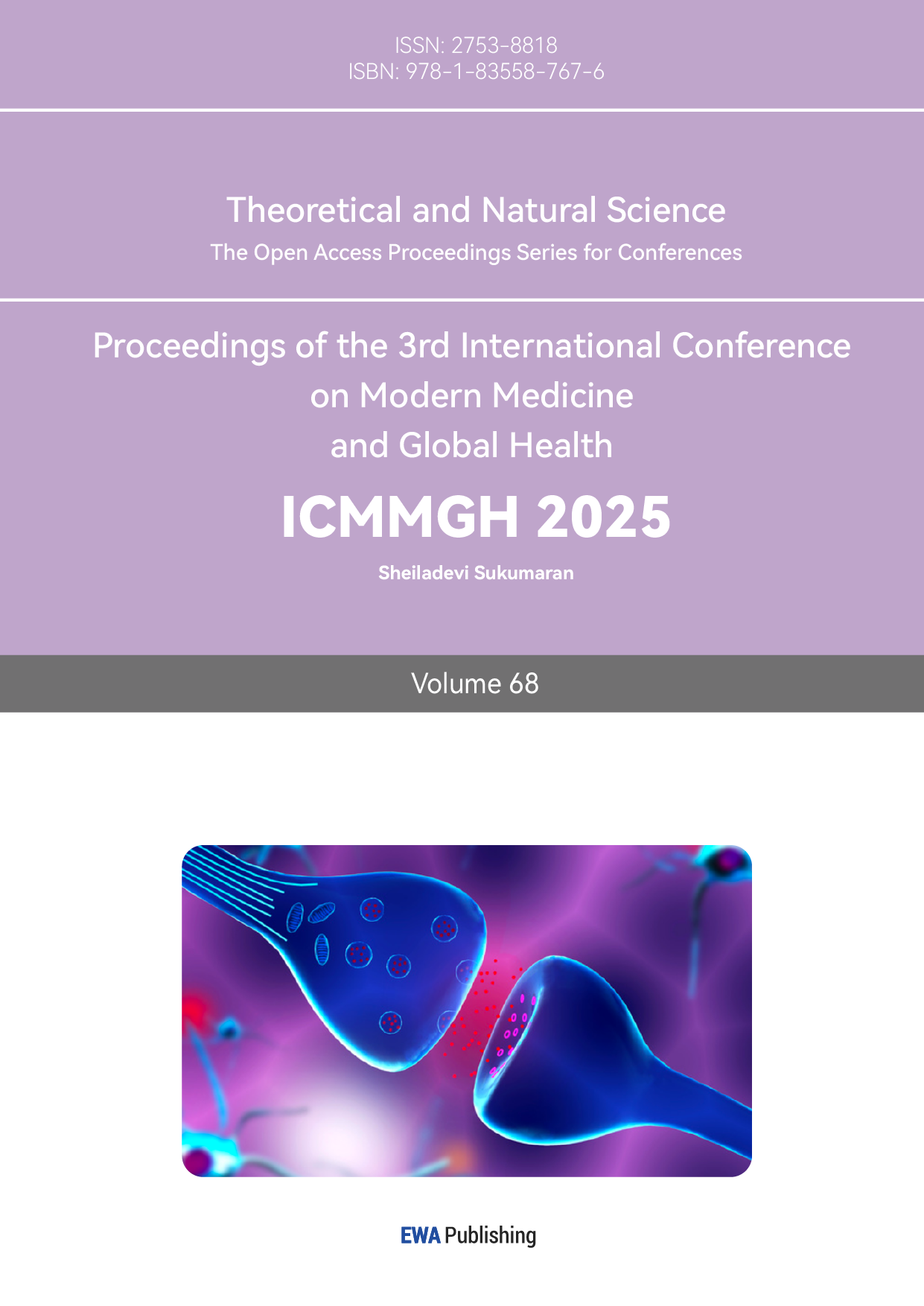1. Introduction
Drought is regarded as a kind of environmental disaster [1]. It’s the costliest one, the US Federal Emergency Management Agency (FEMA) estimated that $6-$8 billion losses causes by droughts every year [2]. Drought occurs in almost all climatic regimes, both wet and dry areas experience droughts [3]. Drought is different from aridity, drought is a temporary abnormal condition, however, aridity is a permanent feature of the climate and it is restricted in low rainfall areas [3].
Sheffield and Wood simple define droughts as ‘lack of water relative to normal conditions’ [4]. However, Lloyd-Hughes considers that a general description of drought requires reference to water supply [5], demand and management, and a general drought cannot be defined without understanding the climatological expectations of stored water to satisfy specific needs. Although there is a universal measure of drought, it is unreasonable to have an accurate and universally objective definition of drought [5]. The droughts can be divided into 4 categories normally, namely meteorological drought, hydrological drought, agriculture drought and economic drought [6]; Meteorological drought is caused by abnormal precipitation deficit; Hydrological drought refer to climate change will exacerbate drought in dry areas while global warming will make it wetter and even cause flooding and evaporation over recent past in wet areas; Agriculture drought would impinges on crop production or ecosystem function and even cause the loss of crops; Socio-economic drought would affect the water resources for human life. This paper focus on the meteorological and hydrological drought to analyze and research drought conditions.
Drought has a series of effects in human society, including environment, economic, ecosystem and agriculture. Drought affects surface as well as underground water resources, which would cause a reduce in water supply, a damage in water quality and further impacts a host of economic and social activities [7]. Barnabas, Jager and Feher think drought will affect the reproduction process of grain and thus affect the yield of grain [8]. In addition, Stanke et al. found that drought affects human health and caused a series of diseases related to nutrition, water and mental health [9]. Hydrological extremes are often defined as floods and droughts, they are endangering human security and posing a serious threat to human life, well-being and society [10]. Floods are usually local and develop over a short period of time, while droughts are widespread and develop over months or years [11]. Before, people do more researches on floods. However, droughts have more effects on people society. The scope that it impacts may much bigger than the area which is experiencing droughts [1]. Therefore, research the change of drought under the climate change is vital for human beings.
Droughts can change due to changes to natural variability modes, or other changes to gradients in sea surface temperature that led to changes in the high sea level pressure. Precipitation is a vital element in drought development [12]. Precipitation deficiency is caused by abnormal atmospheric circulation, which inhibits the formation of clouds and precipitation or the change of rain bands, the decrease in clouds and precipitation leads to drier surfaces and an increase in evaporation demand or potential evapotranspiration (PET), which further reduces clouds and precipitation [13]. Thus, drought conditions would be exacerbated. Wilhite suggested drought should be considered relative to long-term average condition of balance between precipitation and evapotranspiration [14]. Most previous studies have looked at the effects of droughts, for example, the impacts on ecosystems [15], the economic impact of droughts [16], and the effects on plants [17]. Besides, Zargar et al. analyzed drought from the perspective of drought indexes [18]. Nevertheless, few studies have analyzed drought conditions under global climate change from the perspective of evaporation and precipitation.
Our study is aims to analyze and research the effects of evaporation and precipitation on droughts under global climate change. Organizations are listed as follows. Firstly, analyzing the change feature in the global climate, and then discussing the effects of changing in the precipitation (P) and evaporation (E) under the climate change in the drought conditions. Finally, exploring the relationship between annual mean precipitation rate and soil moisture. In others words, the relationship between precipitation rate and drought state is demonstrated.
People can analyze and project drought conditions in a particular area from the angle of evaporation and precipitation. This study provides a new point to research the development of drought.
2. Results and discussion
2.1. Global temperature change in 21st century
Global temperature is a common metric used to summarize the state of the global climate [19]. In this work, selecting two periods, which is the first and last five years of 21st century. Plotting graphs in the earth of temperature in those two periods under the scenario of RCP8.5. Then studying temperature change in the 21st century. Thereby, the global climate change features will be reflected by those images.
2.2. Drought assessment index (P-E)
The precipitation minus evaporation (P-E) is generally used as an informative indicator of water resource conditions. In this research, we define precipitation minus evaporation (P-E) as drought assessment index. Through the change of P-E to study drought conditions. Selecting two periods, which is the past 20 years (1920-1940) and the next 20 years (2080-2100). On the basis of precipitation and evaporation in above two time periods. Plotting the drought assessment index (P-E) in different latitude areas in these two periods. Analyzing the effects of evaporation and precipitation on drought under the condition of global climate change.
2.3. ‘Bucket’ modelling
According to ‘bucket’ model, making use of python to solve different value of soil moisture content when evaporation and precipitation are in balance under two different precipitation rates (2.2m/yr and 1.8mm/yr). And then discussing the changing trends of soil moisture and P-E with the time series. So that, the development of droughts conditions can be reflected by these changes.
3. Results and discussion
3.1. Climate change feature
Those two images show temperature change in this century, we can find the temperature is increasing in most areas. To be specific, the third picture shows increasing condition of temperature more directly. The land is warming about 2.5 times faster than the ocean, and the Arctic is warming faster than most other regions, the number may more than 17.5 k during this century.
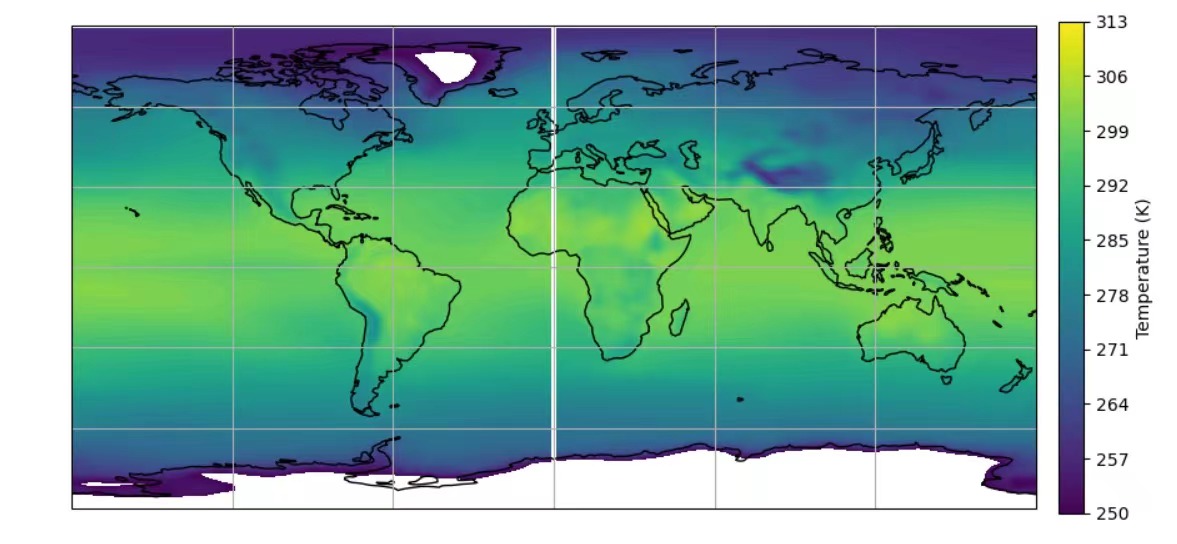
Figure 1: Global temperature during first five years in the 21st century of RCP8.5
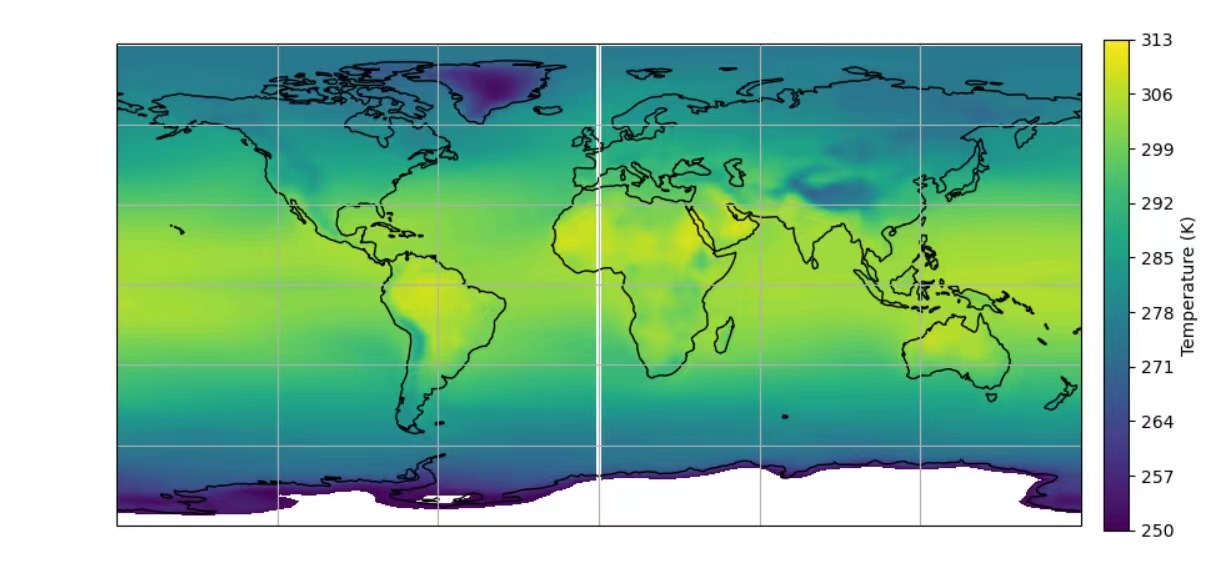
Figure 2: Global temperature during last five years in the 21st century of RCP8.5

Figure 3: Global temperature increases in 21st century for RCP8.5
Moreover, interannual variations in global temperature are associated with the El Nino/La Nina cycle. Tsonis et al. considered that there is a deeper link between global temperature and ENSO [20], El Nino is forcing up global temperatures and negative global temperature trends tend to trigger La Nina. Therefore, under global warming, El Nino events will be more frequent than La Nina events. Nowadays, three factors: accelerating greenhouse gas (GHG) emissions, reducing aerosols and the solar irradiance cycle will accelerating global warming and pushing global temperatures beyond the 1.5°C limit, likely in the 2020s. If no intervention is taken, the 2°C limit could also be exceeded by mid-century [21].
3.2. How precipitation and evaporation changing affects to droughts conditions
Figure 4 describes the value of P-E changing in the past and future 20 years in the different latitudes. From this graph, we can find droughts level aggravate in dry areas which are usually throughout the subtropics. While in wet areas, the climate condition wetter especially in the middle and high latitudes. In the context of global temperature change, the amount of surface evaporation increasing due to greenhouse gas forcing [22]. That is because warming leads to greater evaporation, it accelerates drying in the land surface, the intensity and duration of drought be increased in this case [23, 24]. Simultaneously, the Clausius–Clapeyron (CC) relation illustrates the amount of water vapor in the atmosphere is expected to increase as temperature rising. Specifically, every 1°C increase in temperature, the water holding capacity of air increases by 6-7% [25]. The amount of water vapor in the atmosphere increases, result in increasing rainfall, and even cause a flood in wet areas. The moisture in the atmosphere would increase as a result, wet areas would wetter and wetter.
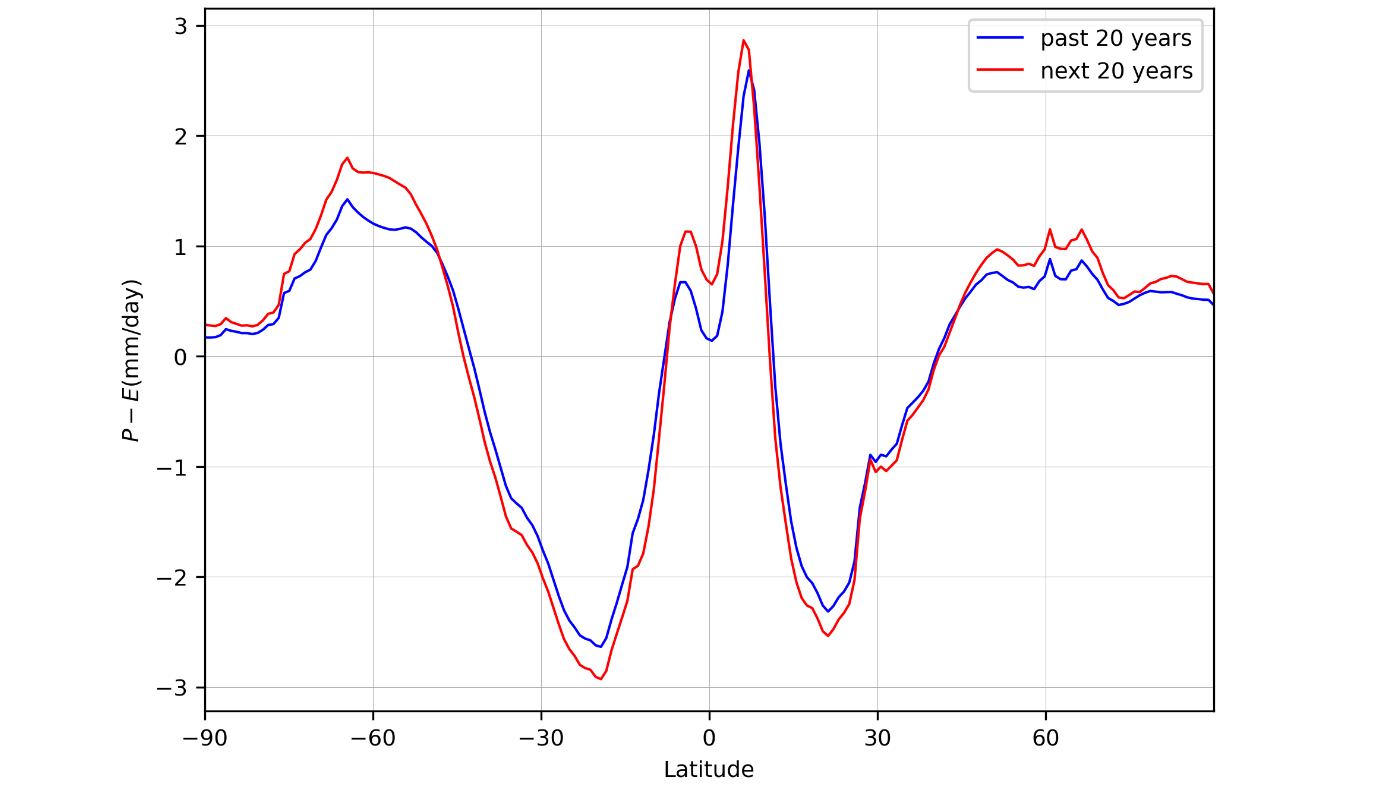
Figure 4: The value of P-E in the past and next 20 years. Red curve refers to P-E in next 20 years, and blue one refers to it in past 20 years.
In addition, the phenomenon that drought conditions occurred in areas where precipitation increased, due to impacts of ENSO [26] that has a close correlation with precipitation, mainly concentrated in tropical and Pacific Ocean areas. In general, a self-sustaining and natural oscillation pattern of the ocean-atmosphere coupled system is used to interpret the occurrence of ENSO [27]. The extremes of this coupled pattern are known as the El Nino and La Nina phases. During the period of El Nino phase, the different value of pressure in the tropical Pacific decreases and the sea surface temperature (SST) abnormity is positive [28]. In this case, precipitation increases in the South Pacific, but dry conditions occur in Australia, Southeast Asia, Southern Africa, northern Brazil, and the southeastern United States [29-32]. In the La Nina phase, SST is cold and sea-level pressure gradient from west to east enhanced in the tropical Pacific Ocean [33]. At this time, rainfall in the South Pacific decreases, but the climate in above areas is wet. Thus, the droughts conditions are also profoundly affected by the ENSO.
3.3. Changing relationship between precipitation rate and soil moisture.
It is seeming to have a liner relationship between soil moisture and precipitation rates, this picture describes when precipitation rate decreases 20%, the soil moisture decreases about one-fifth as well. Precipitation is the main element controlling the state and evolution of soil water, it increases the soil moisture by increasing soil water content. Thus, when the precipitation rate falls, the moisture content in the soil decreases, leading to an aggravation of drought conditions in dry regions. Despite this, there is an exception: in the areas with very dry or saturated soil or extremely high rainfall intensity, increasing of precipitation leads to increase runoff rather than increased soil water content [34].
Soil moisture normally refers to the amount of water stored in the unsaturated soil zone, it is a source of water for the atmosphere due to evapotranspiration from land surface, which mainly consist of plant transpiration and bare soil evaporation [34]. Soil moisture is a key state variable of the land surface, Reliable spatial and temporal estimation of soil moisture is important for monitoring and even predicting hydrological and meteorological hazards, and it reflects interactions between the water, energy, and carbon cycles [35]. As well as a simple "bucket" model is based on the concept of drought, which is a phenomenon caused by insufficient precipitation supply or excess evapotranspiration demand [36]; ‘Bucket’ model produces a good simulation of seasonal cycles and interannual variations of soil moisture [37]. In this case, droughts conditions can be described by soil moisture change caused by variation of precipitation rates.
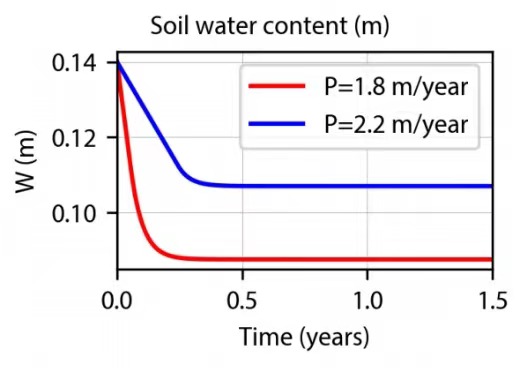
Figure 5: Soil water content in two different precipitation rates. Red curve refers to precipitation rate is 1.8m/year, and blue one refers to it is 2.2m/year.
In addition, soil moisture also provides water through evaporation [38], which has a direct impact on precipitation. Soil moisture affects precipitation by affecting surface heating and cooling, changing turbulence, wind and convection, and thus affecting the generation and distribution of precipitation in time and space. This indicates that there is a coupling phenomenon between precipitation and soil moisture content, and precipitation interacts with soil moisture, and the reduction of precipitation will exacerbate drought conditions.
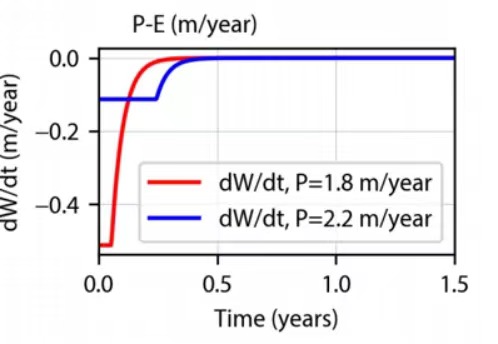
Figure 6: The value of precipitation minus evaporation in two different precipitation rates. Red curve refers to precipitation rate is 1.8m/year, and blue one refers to it is 2.2m/year.
To some extent, soil moisture can be seen as the result of the balance between precipitation and evaporation [39]. Figure 6 shows that when the precipitation rate is 2.2m/year, the drought degree is better than that is 1.8m/year. Meanwhile, the precipitation and evaporation reach the equilibrium state more quickly. The higher precipitation rate can alleviate the surface drought situation better. Similarly, lower precipitation can lead to a rapid decline in soil moisture, resulting in increased drought degree.
4. Conclusion
In conclusion, the main purpose of this study is to analyze the evolution of drought in terms of precipitation and evaporation under the global climate change. In previous studies, scholars have focused on the impact on society about droughts disasters and they analysis and prediction of drought conditions with different kind of drought indices and models. Based on the definition of drought, this study examines the effects of precipitation and evaporation on drought conditions under climate change, as well as the relationship between precipitation and soil moisture, that is the link between precipitation and drought states.
The study found that the global average temperature is rising in general. Especially, the average land temperature is increasing. Under this climate change feature, increased evaporation and precipitation due to rising temperature cause dry regions to become drier and wet regions wetter. At the same time, rainfall is also affected by ENSO. During El Nino periods, rainfall increases, but some tropical and Pacific regions still experience drought conditions. Furthermore, it is found that the decrease of precipitation leads to a similar decline of soil water content, aggravates drought conditions; The lower precipitation would speed up the drought states. At the same time, soil moisture also has an impact on rainfall, and higher soil moisture increases air moisture, which leads to an increase in precipitation. This indicates that there is a coupling phenomenon between precipitation rate and soil moisture. This study provides a new approach for the prediction of future drought by studying surface drought from the perspective of evaporation and precipitation.
Nowadays, increased mean temperature is one of the features of climate change. Global warming is the primary manifestation of the increase in greenhouse gases. On a global scale, the increase in atmospheric temperature since about 1975 is generally thought to be caused by the modern increase in CO2 [40]. All effects of global warming are adverse, global temperature rising leads to a series of disasters, not only in droughts conditions but also leading an increase in the frequency and intensity of floods, hurricanes, heat waves and other natural hazards [41]. People should pay more attention in decreasing behaviors which would produce greenhouse gases, fighting with global warming together. So that, the frequency and intensity of those disasters would decrease in the future, and the less risks to human life.
References
[1]. Mishra, Ashok K., and Vijay P. Singh. "A review of drought concepts." Journal of hydrology 391.1-2 (2010): 202-216.
[2]. FEMA (1995) National mitigation strategy. Federal Emergency Management Agency, Washington, DC
[3]. Maliva, Robert, and Thomas Missimer. Arid lands water evaluation and management. Springer Science & Business Media, 2012.
[4]. Sheffield J, Wood EF (2011). Drought: past problems and future scenarios. Earthscan, London, p 210
[5]. Lloyd-Hughes, Benjamin. "The impracticality of a universal drought definition." Theoretical and applied climatology 117 (2014): 607-611.
[6]. Wilhite, Donald A., and Michael H. Glantz. "Understanding: the drought phenomenon: the role of definitions." Water international 10.3 (1985): 111-120.
[7]. Riebsame, William E. "Climate hazards, climatic change and development planning." Land Use Policy 8.4 (1991): 288-296.
[8]. Barnabás, Beáta, Katalin Jäger, and Attila Fehér. "The effect of drought and heat stress on reproductive processes in cereals." Plant, cell & environment 31.1 (2008): 11-38.
[9]. Stanke, Carla, et al. "Health effects of drought: a systematic review of the evidence." PLoS currents 5 (2013).
[10]. Kundzewicz, ZBIGNIEW W., and P. I. O. T. R. Matczak. "Hydrological extremes and security." Proceedings of the International Association of Hydrological Sciences 366 (2015): 44-53.
[11]. Trenberth, Kevin. "Uncertainty in hurricanes and global warming." Science 308.5729 (2005): 1753-1754.
[12]. Vicente-Serrano, Sergio M., et al. "A review of environmental droughts: Increased risk under global warming?." Earth-Science Reviews 201 (2020): 102953.
[13]. Dai, A., Zhao, T. & Chen, J. Climate Change and Drought: a Precipitation and Evaporation Perspective. Curr Clim Change Rep 4, 301–312 (2018).
[14]. Wilhite, Donald A. "Drought as a natural hazard." (2000): 3-18.
[15]. Bond, Nicholas R., Philip Spencer Lake, and Angela H. Arthington. "The impacts of drought on freshwater ecosystems: an Australian perspective." Hydrobiologia 600 (2008): 3-16.
[16]. Ding, Ya, Michael J. Hayes, and Melissa Widhalm. "Measuring economic impacts of drought: a review and discussion." Disaster Prevention and Management: An International Journal 20.4 (2011): 434-446.
[17]. Seleiman, Mahmoud F., et al. "Drought stress impacts on plants and different approaches to alleviate its adverse effects." Plants 10.2 (2021): 259.
[18]. Zargar, Amin, et al. "A review of drought indices." Environmental Reviews 19.NA (2011): 333-349.
[19]. Hansen J, Sato M, Ruedy R, et al. Global temperature change[J]. Proceedings of the National Academy of Sciences, 2006, 103(39): 14288-14293.
[20]. Tsonis, A. A., et al. "Unfolding the relation between global temperature and ENSO." Geophysical Research Letters 32.9 (2005).
[21]. Jones, Phil D., Tom ML Wigley, and Philip Barton Wright. "Global temperature variations between 1861 and 1984." Nature 322.6078 (1986): 430-434
[22]. Giorgi, Filippo, Francesca Raffaele, and Erika Coppola. "The response of precipitation characteristics to global warming from climate projections." Earth System Dynamics 10.1 (2019): 73-89.
[23]. Trenberth, Kevin E. "Changes in precipitation with climate change." Climate research 47.1-2 (2011): 123-138.
[24]. Dai, Aiguo, Kevin E. Trenberth, and Taotao Qian. "A global dataset of Palmer Drought Severity Index for 1870–2002: Relationship with soil moisture and effects of surface warming." Journal of Hydrometeorology 5.6 (2004): 1117-1130.
[25]. Martinkova, Marta, and Jan Kysely. "Overview of observed Clausius-Clapeyron scaling of extreme precipitation in midlatitudes." Atmosphere 11.8 (2020): 786.
[26]. Vicente‐Serrano, Sergio M., et al. "A multiscalar global evaluation of the impact of ENSO on droughts." Journal of Geophysical Research: Atmospheres 116.D20 (2011).
[27]. Wang, C., Deser, C., Yu, JY., DiNezio, P., Clement, A. (2017). El Niño and Southern Oscillation (ENSO): A Review. In: Glynn, P., Manzello, D., Enochs, I. (eds) Coral Reefs of the Eastern Tropical Pacific. Coral Reefs of the World, vol 8. Springer, Dordrecht. https://doi.org/10.1007/978-94-017-7499-4_4
[28]. Philander SG (1990) El Niño, La Niña, and the Southern Oscillation. Academic Press, London, p 289
[29]. Liu, W. T., and RI Negrón Juárez. "ENSO drought onset prediction in northeast Brazil using NDVI." International Journal of Remote Sensing 22.17 (2001): 3483-3501.
[30]. Baudoin, Marie-Ange, et al. "Living with drought in South Africa: lessons learnt from the recent El Niño drought period." International journal of disaster risk reduction 23 (2017): 128-137.
[31]. Mo, Kingtse C., and Jae E. Schemm. "Relationships between ENSO and drought over the southeastern United States." Geophysical Research Letters 35.15 (2008).
[32]. Räsänen, Timo A., et al. "On the spatial and temporal variability of ENSO precipitation and drought teleconnection in mainland Southeast Asia." Climate of the Past 12.9 (2016): 1889-1905.
[33]. Rasmusson, Eugene M., and Thomas H. Carpenter. "Variations in tropical sea surface temperature and surface wind fields associated with the Southern Oscillation/El Niño." Monthly Weather Review 110.5 (1982): 354-384.
[34]. Seneviratne, Sonia I., et al. "Investigating soil moisture–climate interactions in a changing climate: A review." Earth-Science Reviews 99.3-4 (2010): 125-161.
[35]. Berg, Alexis, and Justin Sheffield. "Climate change and drought: the soil moisture perspective." Current Climate Change Reports 4 (2018): 180-191.
[36]. Ault, Toby R. "On the essentials of drought in a changing climate." Science 368.6488 (2020): 256-260.
[37]. Robock, Alan, and Jian** Mao. "The volcanic signal in surface temperature observations." Journal of Climate 8.5 (1995): 1086-1103.
[38]. Graf, Maximilian, et al. "Is the soil moisture precipitation feedback enhanced by heterogeneity and dry soils? A comparative study." Hydrological Processes 35.9 (2021): e14332.
[39]. Longobardi, Antonia. "Observing soil moisture temporal variability under fluctuating climatic conditions." Hydrology and Earth System Sciences Discussions 5.2 (2008): 935-969.
[40]. Humlum, Ole, Kjell Stordahl, and Jan-Erik Solheim. "The phase relation between atmospheric carbon dioxide and global temperature." Global and Planetary Change 100 (2013): 51-69.
[41]. Arnell, N.W., Lowe, J.A., Challinor, A.J. et al. Global and regional impacts of climate change at different levels of global temperature increase. Climatic Change 155, 377–391 (2019).
Cite this article
Lin,H. (2024). The Effects of Evaporation and Precipitation on Droughts under Global Change. Theoretical and Natural Science,68,1-8.
Data availability
The datasets used and/or analyzed during the current study will be available from the authors upon reasonable request.
Disclaimer/Publisher's Note
The statements, opinions and data contained in all publications are solely those of the individual author(s) and contributor(s) and not of EWA Publishing and/or the editor(s). EWA Publishing and/or the editor(s) disclaim responsibility for any injury to people or property resulting from any ideas, methods, instructions or products referred to in the content.
About volume
Volume title: Proceedings of the 3rd International Conference on Modern Medicine and Global Health
© 2024 by the author(s). Licensee EWA Publishing, Oxford, UK. This article is an open access article distributed under the terms and
conditions of the Creative Commons Attribution (CC BY) license. Authors who
publish this series agree to the following terms:
1. Authors retain copyright and grant the series right of first publication with the work simultaneously licensed under a Creative Commons
Attribution License that allows others to share the work with an acknowledgment of the work's authorship and initial publication in this
series.
2. Authors are able to enter into separate, additional contractual arrangements for the non-exclusive distribution of the series's published
version of the work (e.g., post it to an institutional repository or publish it in a book), with an acknowledgment of its initial
publication in this series.
3. Authors are permitted and encouraged to post their work online (e.g., in institutional repositories or on their website) prior to and
during the submission process, as it can lead to productive exchanges, as well as earlier and greater citation of published work (See
Open access policy for details).
References
[1]. Mishra, Ashok K., and Vijay P. Singh. "A review of drought concepts." Journal of hydrology 391.1-2 (2010): 202-216.
[2]. FEMA (1995) National mitigation strategy. Federal Emergency Management Agency, Washington, DC
[3]. Maliva, Robert, and Thomas Missimer. Arid lands water evaluation and management. Springer Science & Business Media, 2012.
[4]. Sheffield J, Wood EF (2011). Drought: past problems and future scenarios. Earthscan, London, p 210
[5]. Lloyd-Hughes, Benjamin. "The impracticality of a universal drought definition." Theoretical and applied climatology 117 (2014): 607-611.
[6]. Wilhite, Donald A., and Michael H. Glantz. "Understanding: the drought phenomenon: the role of definitions." Water international 10.3 (1985): 111-120.
[7]. Riebsame, William E. "Climate hazards, climatic change and development planning." Land Use Policy 8.4 (1991): 288-296.
[8]. Barnabás, Beáta, Katalin Jäger, and Attila Fehér. "The effect of drought and heat stress on reproductive processes in cereals." Plant, cell & environment 31.1 (2008): 11-38.
[9]. Stanke, Carla, et al. "Health effects of drought: a systematic review of the evidence." PLoS currents 5 (2013).
[10]. Kundzewicz, ZBIGNIEW W., and P. I. O. T. R. Matczak. "Hydrological extremes and security." Proceedings of the International Association of Hydrological Sciences 366 (2015): 44-53.
[11]. Trenberth, Kevin. "Uncertainty in hurricanes and global warming." Science 308.5729 (2005): 1753-1754.
[12]. Vicente-Serrano, Sergio M., et al. "A review of environmental droughts: Increased risk under global warming?." Earth-Science Reviews 201 (2020): 102953.
[13]. Dai, A., Zhao, T. & Chen, J. Climate Change and Drought: a Precipitation and Evaporation Perspective. Curr Clim Change Rep 4, 301–312 (2018).
[14]. Wilhite, Donald A. "Drought as a natural hazard." (2000): 3-18.
[15]. Bond, Nicholas R., Philip Spencer Lake, and Angela H. Arthington. "The impacts of drought on freshwater ecosystems: an Australian perspective." Hydrobiologia 600 (2008): 3-16.
[16]. Ding, Ya, Michael J. Hayes, and Melissa Widhalm. "Measuring economic impacts of drought: a review and discussion." Disaster Prevention and Management: An International Journal 20.4 (2011): 434-446.
[17]. Seleiman, Mahmoud F., et al. "Drought stress impacts on plants and different approaches to alleviate its adverse effects." Plants 10.2 (2021): 259.
[18]. Zargar, Amin, et al. "A review of drought indices." Environmental Reviews 19.NA (2011): 333-349.
[19]. Hansen J, Sato M, Ruedy R, et al. Global temperature change[J]. Proceedings of the National Academy of Sciences, 2006, 103(39): 14288-14293.
[20]. Tsonis, A. A., et al. "Unfolding the relation between global temperature and ENSO." Geophysical Research Letters 32.9 (2005).
[21]. Jones, Phil D., Tom ML Wigley, and Philip Barton Wright. "Global temperature variations between 1861 and 1984." Nature 322.6078 (1986): 430-434
[22]. Giorgi, Filippo, Francesca Raffaele, and Erika Coppola. "The response of precipitation characteristics to global warming from climate projections." Earth System Dynamics 10.1 (2019): 73-89.
[23]. Trenberth, Kevin E. "Changes in precipitation with climate change." Climate research 47.1-2 (2011): 123-138.
[24]. Dai, Aiguo, Kevin E. Trenberth, and Taotao Qian. "A global dataset of Palmer Drought Severity Index for 1870–2002: Relationship with soil moisture and effects of surface warming." Journal of Hydrometeorology 5.6 (2004): 1117-1130.
[25]. Martinkova, Marta, and Jan Kysely. "Overview of observed Clausius-Clapeyron scaling of extreme precipitation in midlatitudes." Atmosphere 11.8 (2020): 786.
[26]. Vicente‐Serrano, Sergio M., et al. "A multiscalar global evaluation of the impact of ENSO on droughts." Journal of Geophysical Research: Atmospheres 116.D20 (2011).
[27]. Wang, C., Deser, C., Yu, JY., DiNezio, P., Clement, A. (2017). El Niño and Southern Oscillation (ENSO): A Review. In: Glynn, P., Manzello, D., Enochs, I. (eds) Coral Reefs of the Eastern Tropical Pacific. Coral Reefs of the World, vol 8. Springer, Dordrecht. https://doi.org/10.1007/978-94-017-7499-4_4
[28]. Philander SG (1990) El Niño, La Niña, and the Southern Oscillation. Academic Press, London, p 289
[29]. Liu, W. T., and RI Negrón Juárez. "ENSO drought onset prediction in northeast Brazil using NDVI." International Journal of Remote Sensing 22.17 (2001): 3483-3501.
[30]. Baudoin, Marie-Ange, et al. "Living with drought in South Africa: lessons learnt from the recent El Niño drought period." International journal of disaster risk reduction 23 (2017): 128-137.
[31]. Mo, Kingtse C., and Jae E. Schemm. "Relationships between ENSO and drought over the southeastern United States." Geophysical Research Letters 35.15 (2008).
[32]. Räsänen, Timo A., et al. "On the spatial and temporal variability of ENSO precipitation and drought teleconnection in mainland Southeast Asia." Climate of the Past 12.9 (2016): 1889-1905.
[33]. Rasmusson, Eugene M., and Thomas H. Carpenter. "Variations in tropical sea surface temperature and surface wind fields associated with the Southern Oscillation/El Niño." Monthly Weather Review 110.5 (1982): 354-384.
[34]. Seneviratne, Sonia I., et al. "Investigating soil moisture–climate interactions in a changing climate: A review." Earth-Science Reviews 99.3-4 (2010): 125-161.
[35]. Berg, Alexis, and Justin Sheffield. "Climate change and drought: the soil moisture perspective." Current Climate Change Reports 4 (2018): 180-191.
[36]. Ault, Toby R. "On the essentials of drought in a changing climate." Science 368.6488 (2020): 256-260.
[37]. Robock, Alan, and Jian** Mao. "The volcanic signal in surface temperature observations." Journal of Climate 8.5 (1995): 1086-1103.
[38]. Graf, Maximilian, et al. "Is the soil moisture precipitation feedback enhanced by heterogeneity and dry soils? A comparative study." Hydrological Processes 35.9 (2021): e14332.
[39]. Longobardi, Antonia. "Observing soil moisture temporal variability under fluctuating climatic conditions." Hydrology and Earth System Sciences Discussions 5.2 (2008): 935-969.
[40]. Humlum, Ole, Kjell Stordahl, and Jan-Erik Solheim. "The phase relation between atmospheric carbon dioxide and global temperature." Global and Planetary Change 100 (2013): 51-69.
[41]. Arnell, N.W., Lowe, J.A., Challinor, A.J. et al. Global and regional impacts of climate change at different levels of global temperature increase. Climatic Change 155, 377–391 (2019).





